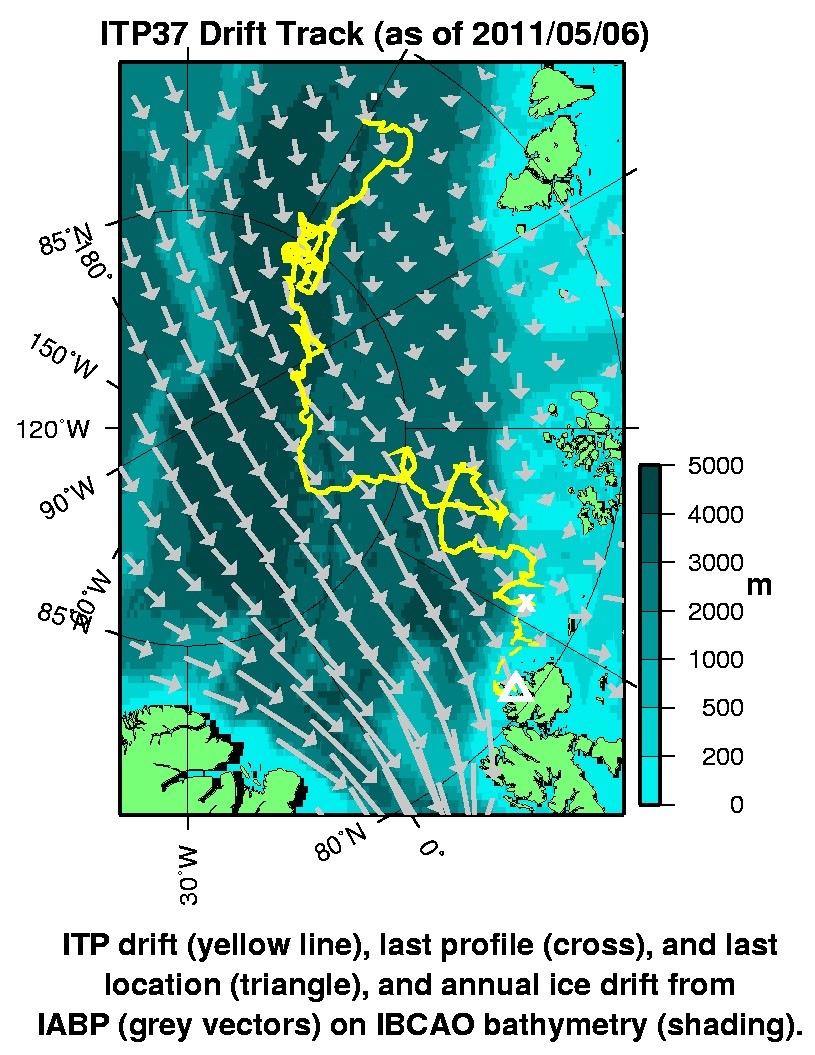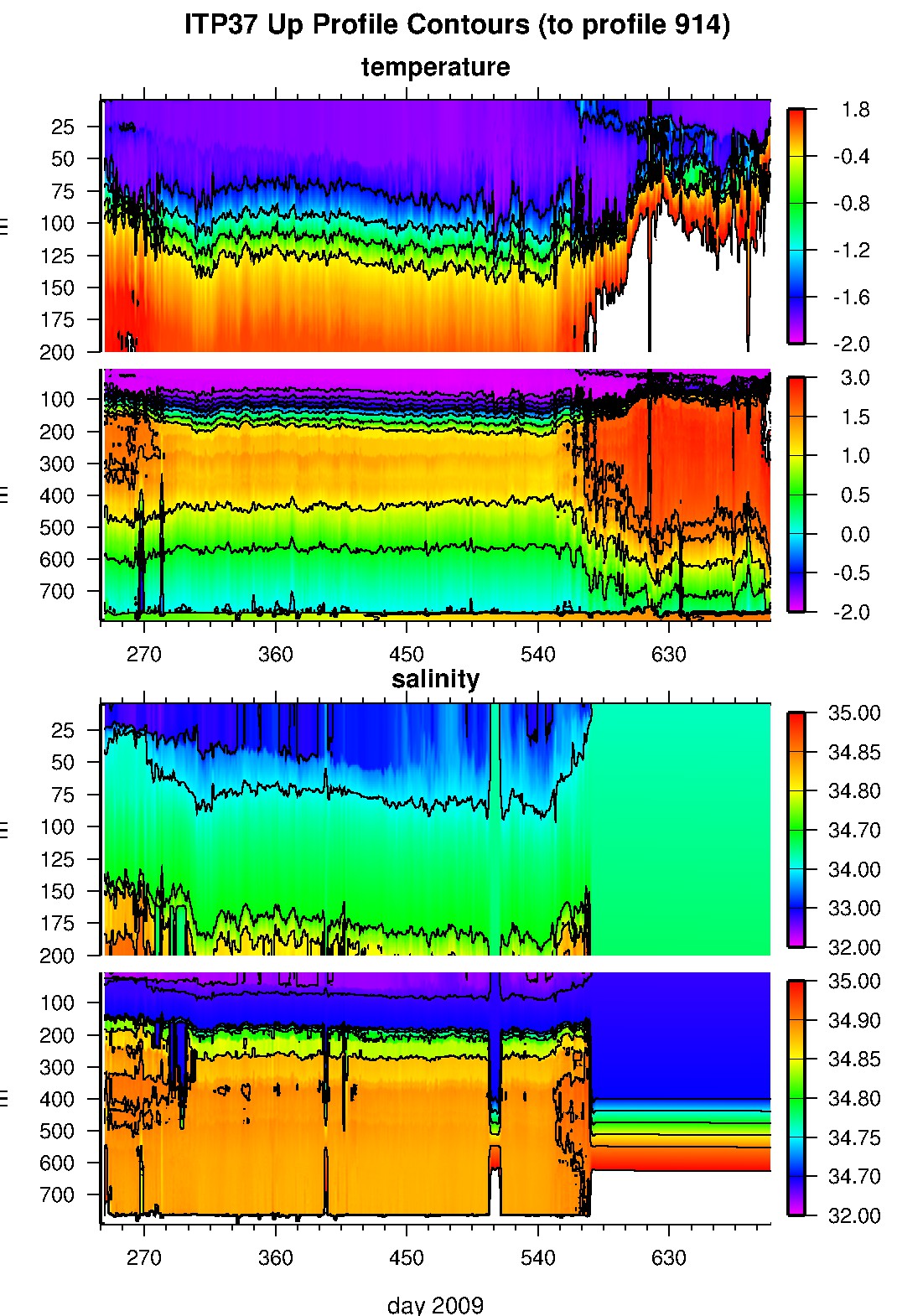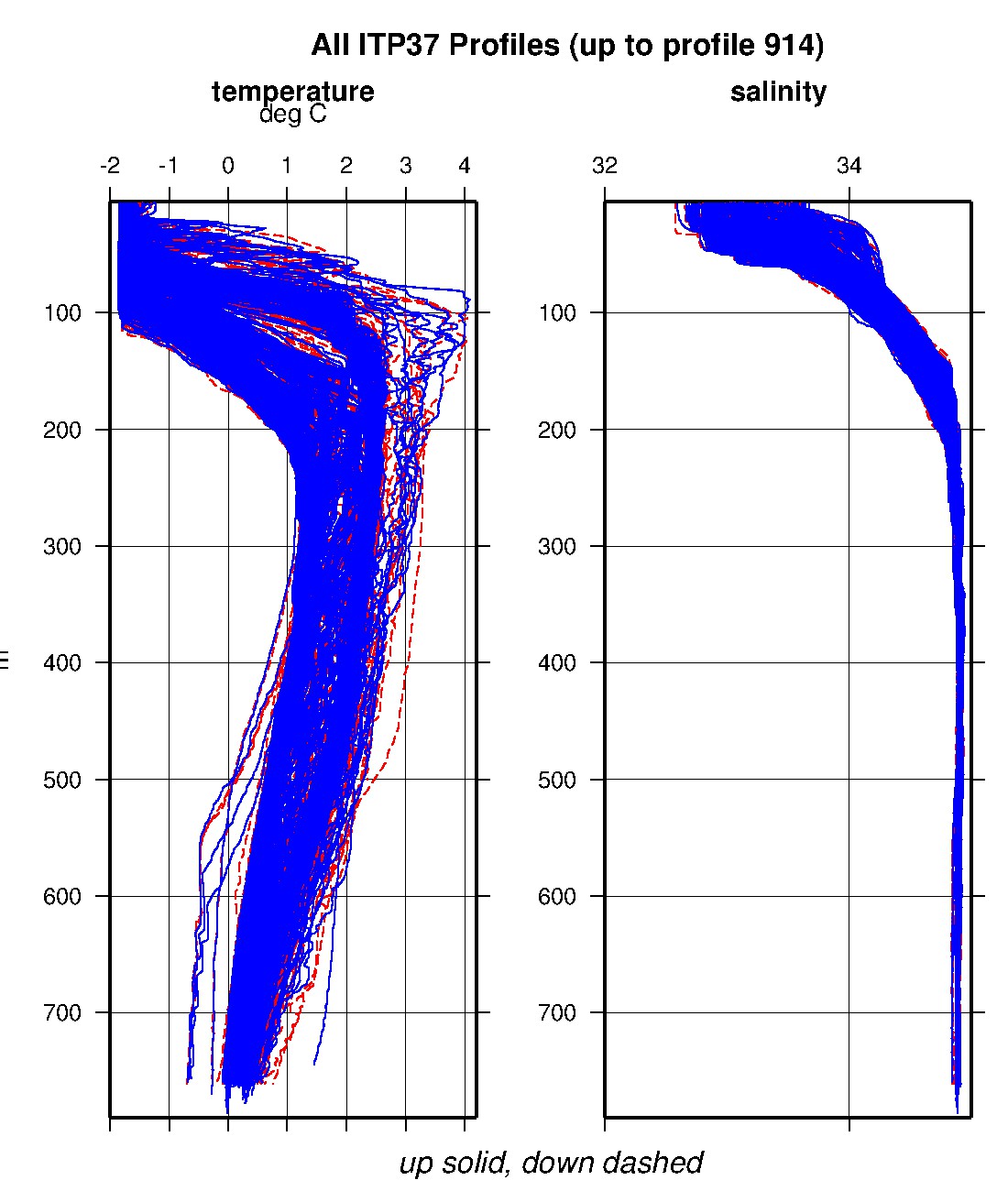ITP37 Data Description
The ITP profiler was configured to operate with a standard sampling schedule of 2 one-way profiles between 7 and 750 m depth each day. In the surface package, the GPS receiver was powered hourly to obtain locations, and buoy temperature and battery voltage status were recorded.
After deployment, the systems survived freeze up and drifted across the Amundsen and Nansen Basins with the Transpolar Drift for 16 months acquiring a long section of temperature and salinity profiles until the mooring tether dragged on the slope north of the Barents Sea. Less than 3 weeks later (on January 11, 2011), transmissions stopped being received from the surface package, presumably because the buoy was pushed under ice. On March 3, 2011, transmissions resumed with the buoy located just north of the Svalbard archipelago, but the backlog of status files showed that GPS locations were unable to be obtained during the silent period. Three weeks later the system grounded on Northeast Land, where it remained unmoving until it was retrieved in May.
The plots to the right are of the final, calibrated, edited data (as opposed to the raw data presented on the active instrument pages).
See the Data Products tab to the left for descriptions of the three levels (I, II, III) of data processing and to access all data.
ITP 37 data can also be found at the links below:
Level II hourly buoy location data in ASCII format: itp37rawlocs.dat
Level III 1-Hz processed profile data in MATLAB format: itp37cormat.tar.Z and itp37cormat.zip
Level III 1-db bin-averaged processed profile data in MATLAB format: itp37final.mat
Level III 1-db bin-averaged processed profile data in ASCII format: itp37final.tar.Z and itp37final.zip


